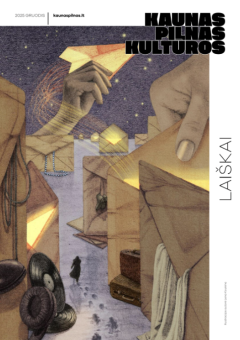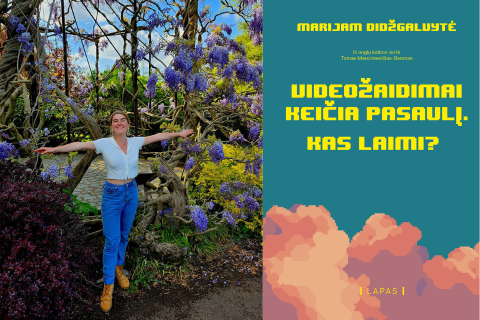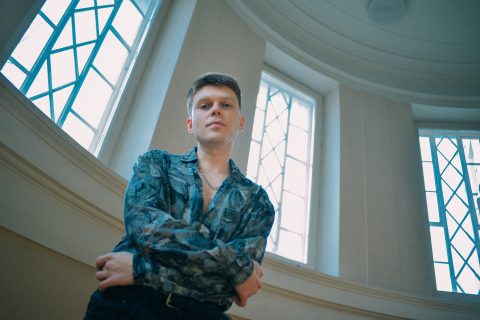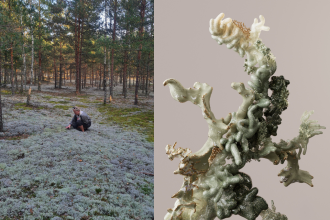You can’t help but rejoice when a new cultural institution or space opens in Kaunas. Today, we’re talking about one just like that: set in an impressive noble residence, surrounded by artists and the cultural community, right in the heart of the city. The photographer and I dropped by the Kaunas Faculty of Vilnius Academy of Arts to meet Karolina Latvytė-Bibiano, an interdisciplinary artist and curator, who is currently in charge of Kaunas’ freshest art gallery: Muitinė.
Having been here before, I was curious to see how the interior spaces looked like after a restoration process that lasted more than a decade. The walls, which once bore witness to somber stories from a psychiatric hospital, are now completely transformed. The renovations have revived traces of the Lithuanian Grand Dukes’ era, while the academic work environment now meets the highest standards.
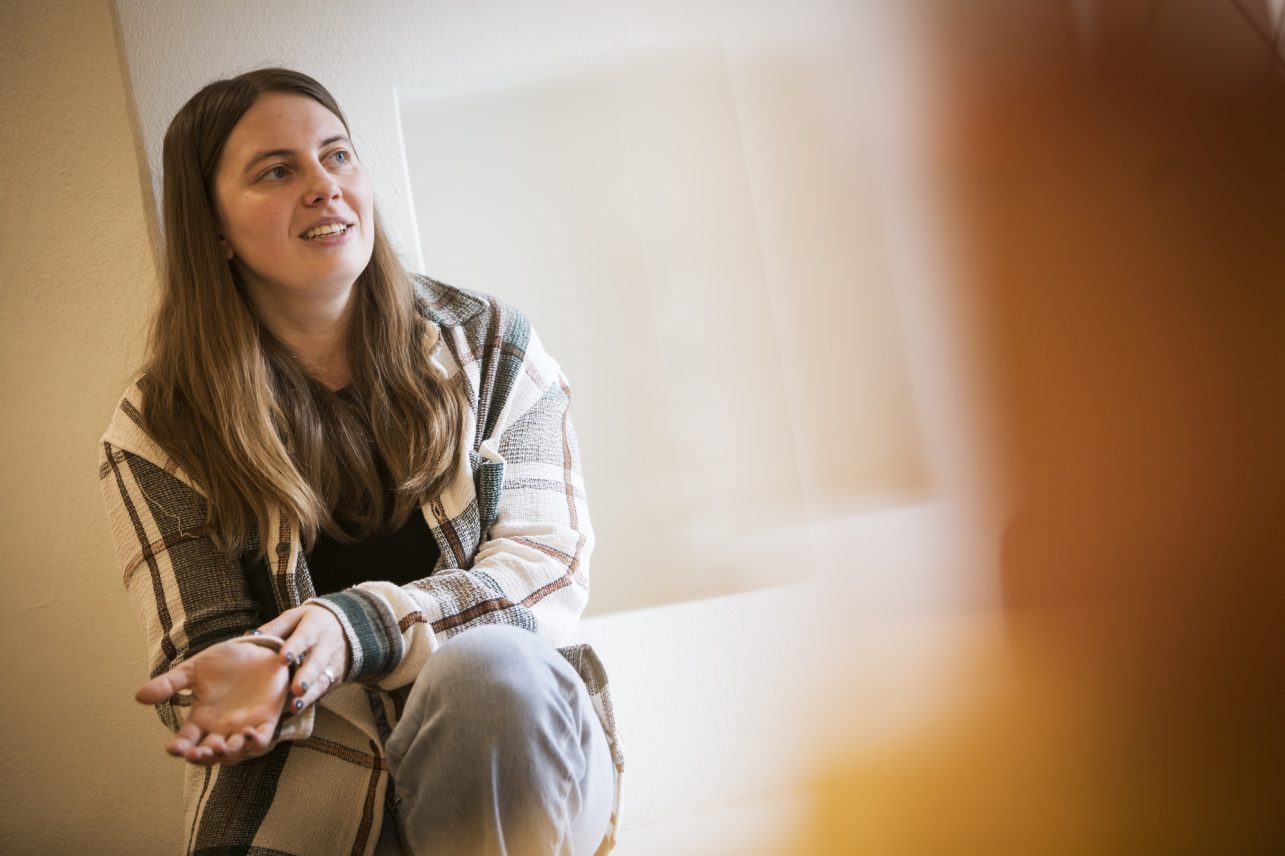
After wandering through the labyrinths of the Vilnius Academy of Arts Kaunas Faculty, we arrive at what are clearly historical spaces: stonework all around, small windows into a cinematic courtyard, high ceilings with wooden partitions, and strangely arranged rooms. This is Muitinė Gallery, which now has a new manager. The gallery is cozy, intimate, and comfortable, and it is easy to get to know the work of today’s Vilnius Academy of Arts community as you walk by. Although there is not a lot of space, the walls are already adorned with large paintings, which do not look oppressed.
The need for a gallery was already being discussed in the media back in 2006. At the time, then-dean Raimondas Žiupka stated that once the building was transferred to the Vilnius Academy of Arts community, it would create an opportunity to establish a gallery where students and faculty members’ works could be exhibited, events of public interest hosted year-round, and this culturally significant building would be made accessible to both Kaunas residents and visitors. Well, it took nearly 20 years for this vision to become a reality. But after walking around this space, it becomes clear just how much research, coordination, and permits – followed by meticulous restoration work – were required for this residence.
In the hands of an artist
The curator of the gallery is well known to those interested in art and has presented a number of interesting projects of her own and others. “I entered the world of art while I was still at school. My first love was photography. I enrolled in the Aušros Gymnasium, which seemed more related to artistic activities, and I was preparing to enter photography studies. However, after starting preparatory courses, I became fascinated with painting and ended up studying here in Kaunas. I gained my artistic education within these very corridors,” Karolina shares with us. Yet she shies away from the label of a painter. Karolina is an interdisciplinary artist, weaving different media and approaches in her work.
“Now, I probably work the most with video material. Traveling during my studies also brought diversity into my creative process: through the Erasmus program, I had the chance to study and create in both China and Italy. At the time, things weren’t as polished here, so we tried to have a change of scenery,” the gallery curator continued.
When she came back, she tried to figure out what to do and what to create. She wanted to continue her studies abroad, but her romantic life made her consider local options (we wrote about Karolina and her husband, Adriano Carlo Bibiano, in our February 2023 issue). Eventually, she chose to study sculpture in Vilnius to expand her creative vision.
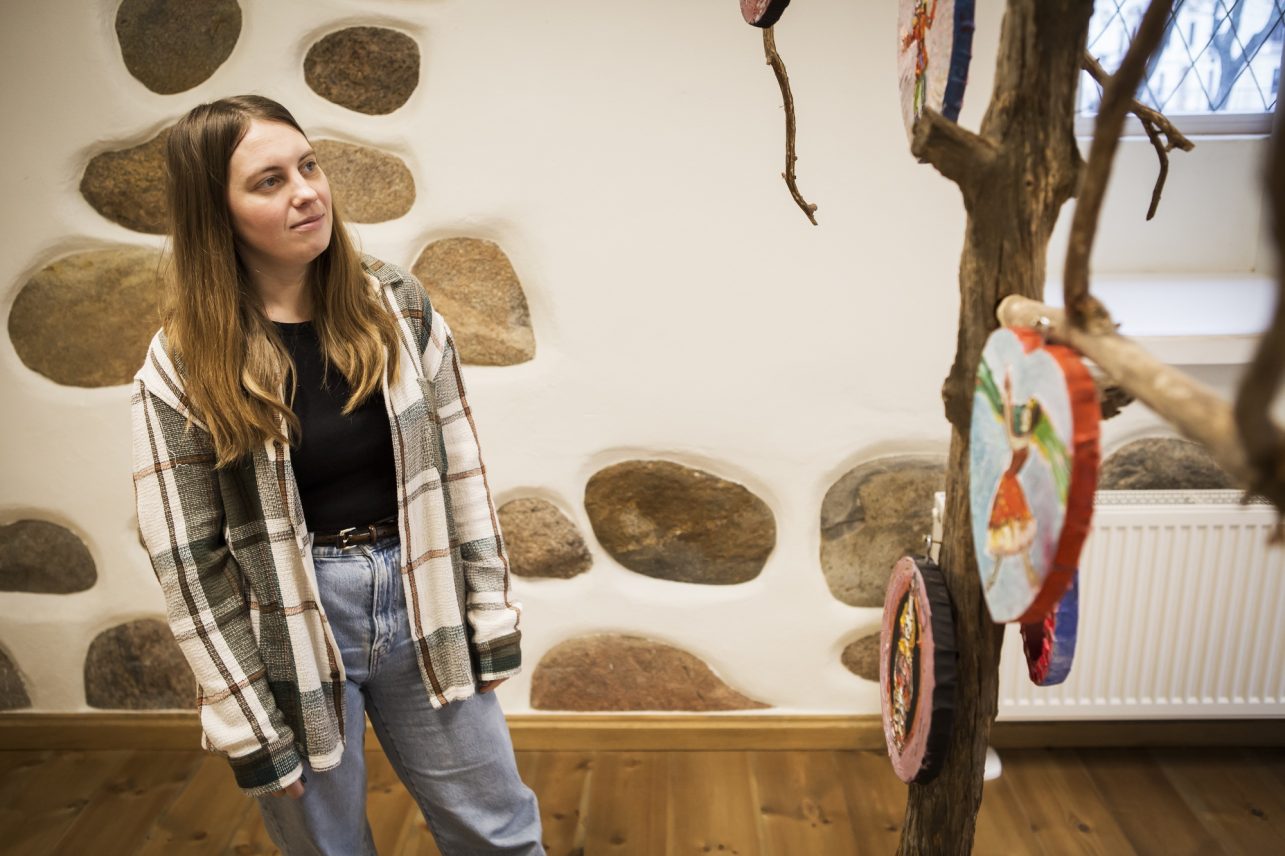
“I would probably differentiate my studies in Kaunas and Vilnius in this way: here, in my hometown, you learn creative techniques much more thoroughly – without them, you can’t create anything. Studies in the capital are more conceptual, with a deeper focus on theory. Is one better than the other? I doubt it; they’re simply different, addressing different aspects, even though they fall under the same academic institution. Still, Vilnius did help me free myself creatively a bit,” the interviewee adds.
The system and the name
In fact, the gallery we’re discussing began operating after the completion of the restoration work at Muitinės St. 2, nearly two years ago. However, the organization was inconsistent, lacking a clear vision, concept, and a dedicated person working there full-time. And it didn’t even have a name.
“I’ve only been working here since last June. Of course, summer is always a slower time in academia, there are no students, so we used that time to deal with organizational matters. We had our first opening in September, along with the returning students,” Karolina explained.
The name of the gallery was chosen by the entire Kaunas Faculty community. She says that more than 100 suggestions were received, including some witty ones. Among them, of course, was “Asylum” due to the history of the building and the place name, which is still used by old Kaunas residents to describe the intersection of Muitinės, Aleksoto Street and Rotušės Square.
However, another option has been chosen, which is also linked to the history of the building and the surrounding area and street. “It was a complex and long-debated issue, but I probably pushed the name “Muitinė” (customs) the most. It is believed that one of the first customs offices was located here. Naturally, there was a harbor nearby, many commercial warehouses, and a thriving shipping industry. It may not necessarily have been a customs office in this building, but it certainly was in this area. That’s why the street is called that way.”
Alongside the artist community
Will you need to pay a customs fee to enter? No, gallery visits are free. The works exhibited here are not by uniformed officers but by both young and established artists. After all, the corridors of Vilnius Academy of Arts Kaunas Faculty are home to what is probably the largest community of visual artists in Kaunas. The Faculty of Arts at Vytautas Magnus University (VDU), located just across the street, adds a healthy dose of competitive weight, as it also hosts exhibition spaces open to the public.
“Although the concept is still evolving– we haven’t been operating for long – it’s clear that we are closely tied to the context in which we are situated. As a division of Vilnius Academy of Arts, one of our missions is to showcase young artists while also exhibiting works by established creators within our community. Over time, we also aim to integrate works from other highly regarded Lithuanian artists into these spaces,” the well-known curator explains about the current and future activities.
The interviewee is open about the fact that this space is both convenient and challenging. Being housed in an old building always comes with issues related to heritage preservation and restrictions. The setup and dismantling of exhibitions in galleries often resemble a construction site of their own. However, in the freshly restored palace of the Grand Dukes of Lithuania, as in other heritage sites, drilling or otherwise damaging the old masonry is strictly prohibited. As a result, the team must adapt and find creative solutions to improve the space while respecting its historical integrity.
Present and Future Exhibitions
Karolina has recently completed the gallery’s first open call for exhibitions. As they themselves have stated, this space is dedicated to a wide range of creative forms and ideas, from conceptual art practice to works based on traditional techniques. The gallery aims to be a dynamic platform for artists and researchers looking for a space for experimentation, dialogue, and the realization of ideas.
At the time of our conversation, the very seasonal exhibition Winter Stories by the well-known artist, painter, and professor Aušra Vaitkūnienė was hanging in the gallery. Upon entering, we were greeted by a large work with the familiar Kaunas Faculty courtyard and the spruce tree that grows there. In the next room, we saw the two-part, cold and unexpected Nutcracker, reminiscent of the well-known painting The Scream.
“We have had one open call and will probably have two each year. One at the end of the year, like now. The other one in mid-summer, before the Lithuanian Council for Culture’s project submissions. This makes it easier for everyone to project their creative future, funding decisions and grants,” Karolina said.
Although the walls are currently covered with paintings, Karolina says that these walls will host more interdisciplinary projects and exhibitions. Although painting dominates in this academic environment, she doesn’t want to label the gallery, because that could have a lasting effect.
“One exhibition here lasts about 3–4 weeks. I’m still finalizing this year’s schedule, but we’ll likely have around 8–9 exhibitions annually. In February, we will host an exhibition by Petras Lincevičius, and in March, one by Barbora Matonytė. We have also already confirmed a painting exhibition by Pranas Griušys for next December,” the curator outlines her plans.
Of course, there will also be student group exhibitions. As Karolina mentions, there is also an idea of artist residencies. This complex has guest accommodation and creative studios, providing all the necessary conditions for artistic work. However, the main activities need to gain momentum first.
“I really wanted to invite Ignas Pavliukevičius. Over the summer, he presented his doctoral project, which left a strong impression on me. He works with artificial intelligence and has created a kind of digital clone of himself. It’s incredibly fascinating, and I hope we’ll be able to feature examples of such work at Muitinė,” Karolina shares her vision.
